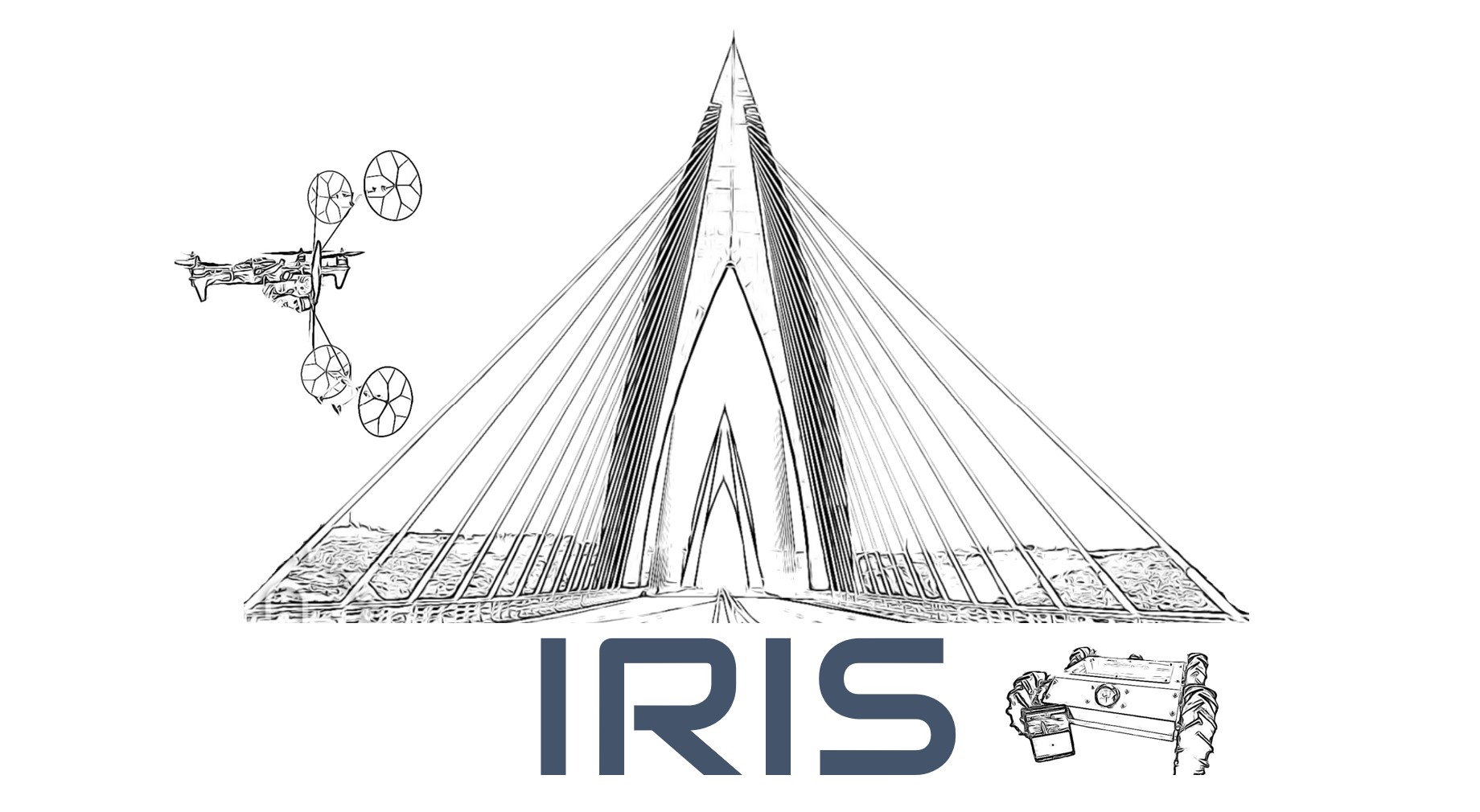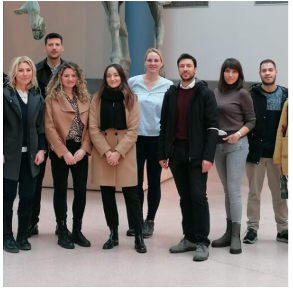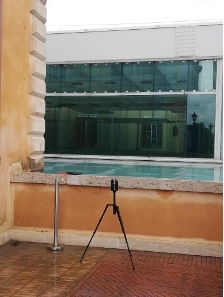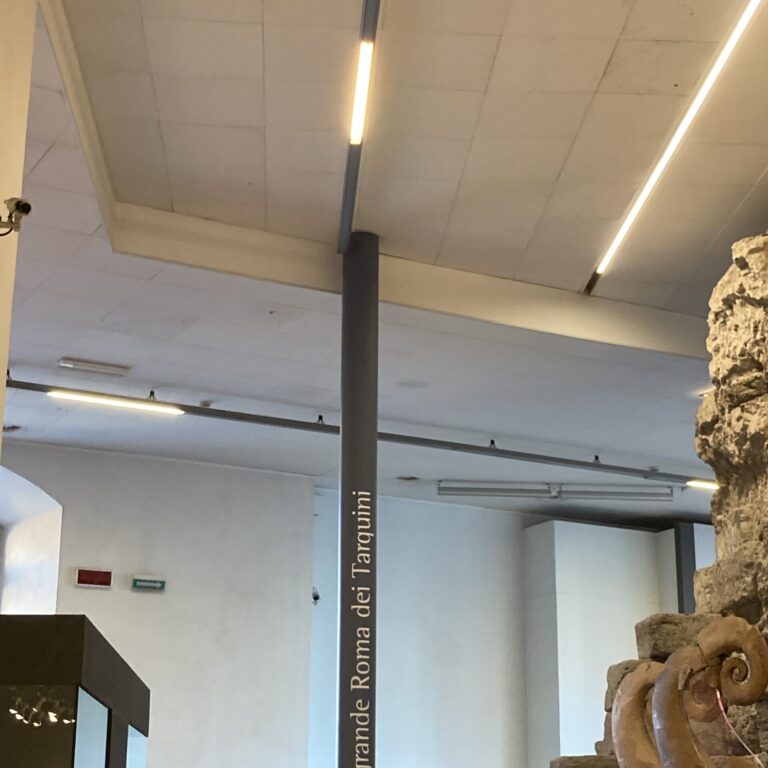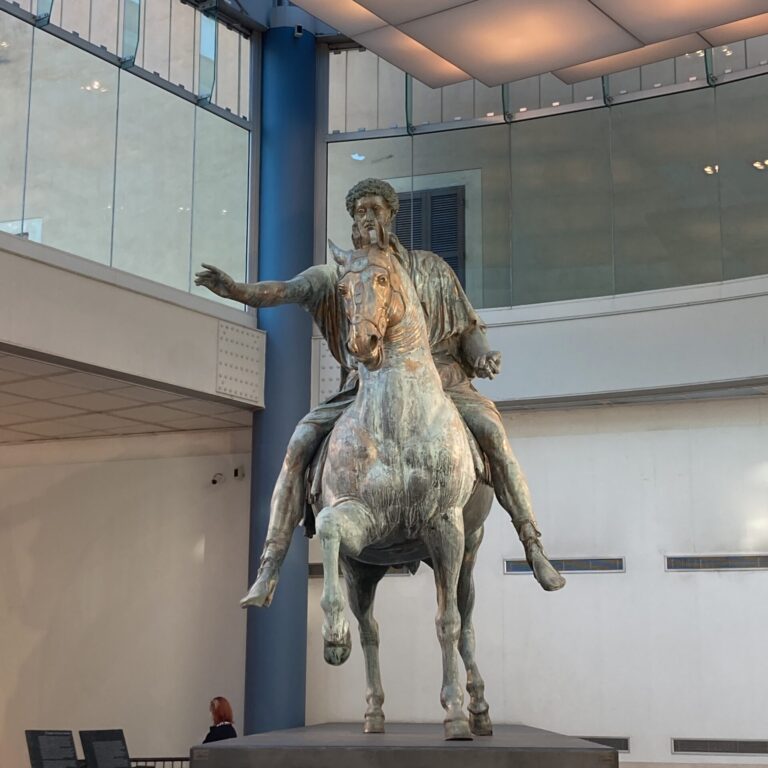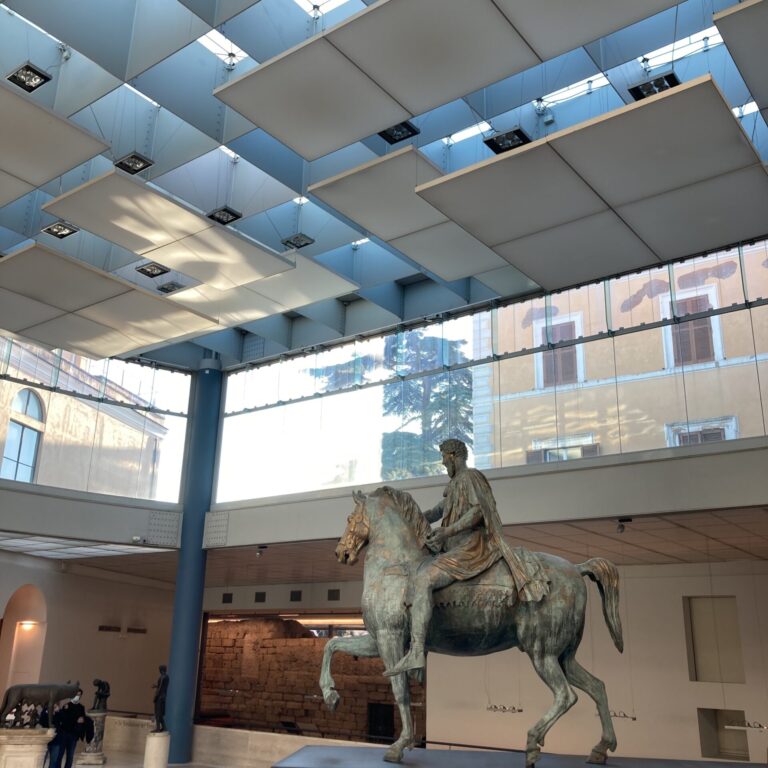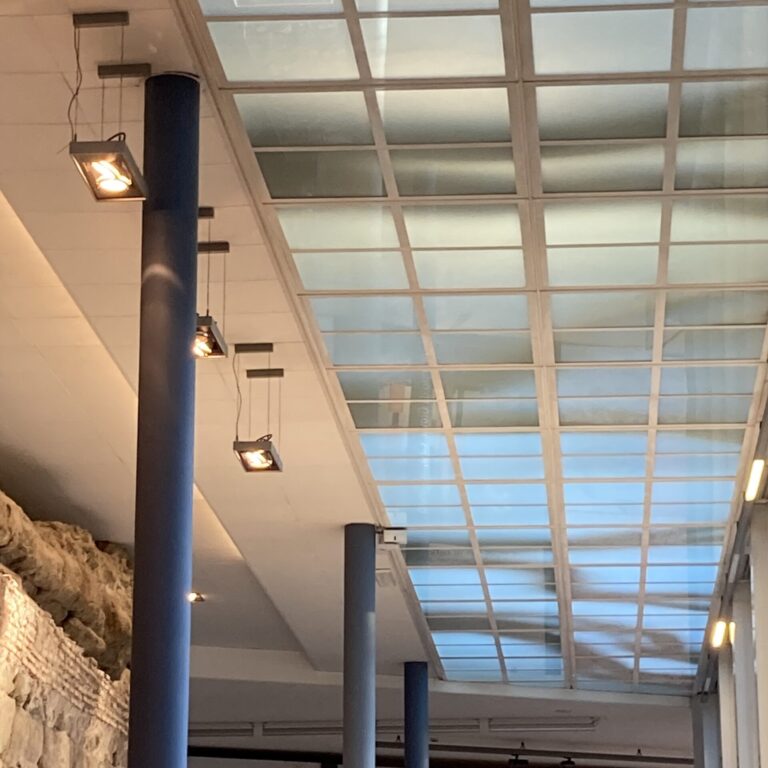
DESCRIPTION
The Capitoline Museums are one of the most important public museums in Rome and Italy. The origin of the Capitoline Museums has been traced back to 1471 when Pope Sixtus IV donated a group of bronze statues of great symbolic value to the People of Rome. The collections are closely linked to the city of Rome, and most of the exhibits come from the city itself. The historical venue of the Capitoline Museums is made up of the Palazzo dei Conservatori and the Palazzo Nuovo (courtyard, a large, monumental staircase), buildings overlooking the Michelangelo’s Piazza del Campidoglio. [1]
The most famous work that is preserved is the original equestrian statue of Marcus Aurelius which is in the new grand glass hall (see figure on the left) built inside what was called the Giardino Romano (Roman Garden) in Palazzo dei Conservatori. Designed by the architect Carlo Aymonino, it is a prestigious piece of modern architecture within the ambit of this Municipal Museum complex and is the fulcrum that links the historic part of Palazzo dei Conservatori to those parts of the museum that have been more recently constructed. [2] The new hall is the result of a long and complicated process (1988–2005) which finally consists of a steel and glass structure on an elliptic plan and shaped around the foundations of the Temple of Jupiter like a frustum of an ellipse. [3] The roof of this room is composed of thin glassy skin with a triangular module supported by vertical steel blades and an elliptical steel ring; the interior is 11 meters high. The connection between a lower-level elliptical steel ring of the large vault and the perimeter walls of the Garden, sloping slighting toward the exterior, is also in steel blades. Six steel pilasters, 75 cm in diameter, sustain the roofing. Apart from these columns, the structure rests on small steel pilasters placed against the walls of the Garden, covered by a stone facing. The vertical surface (4.2 meters high) resulting from the difference in height between the large central vault and the connecting elements is entirely glazed, to preserve the “external” nature of this space. [4] The two levels of the covering and the two elliptical steel rings are visible clearly in the figure reported below [5].

